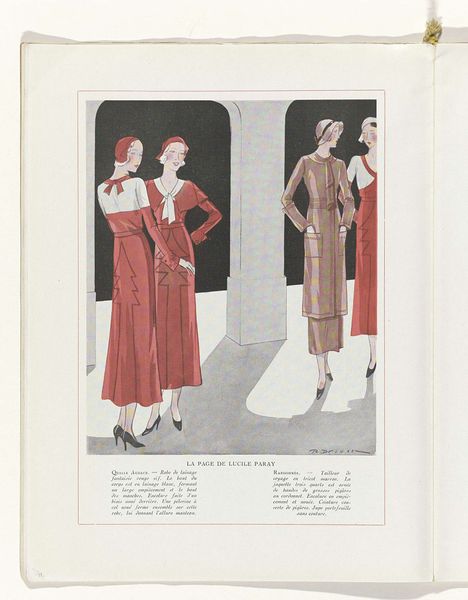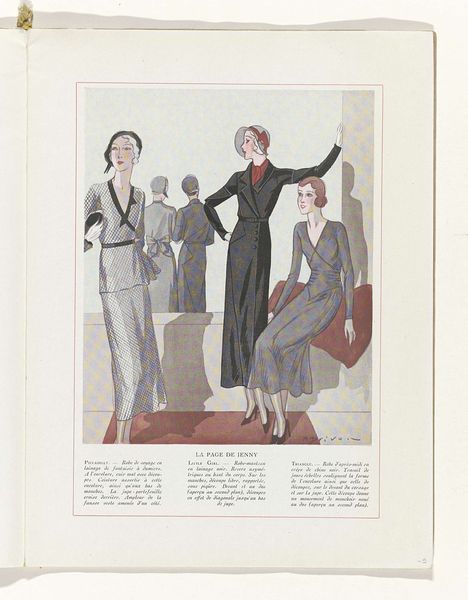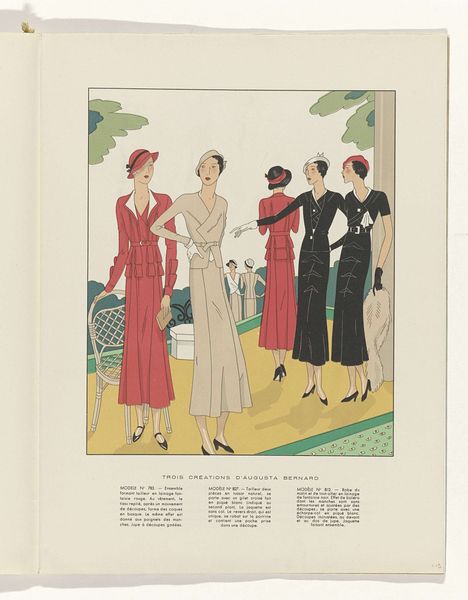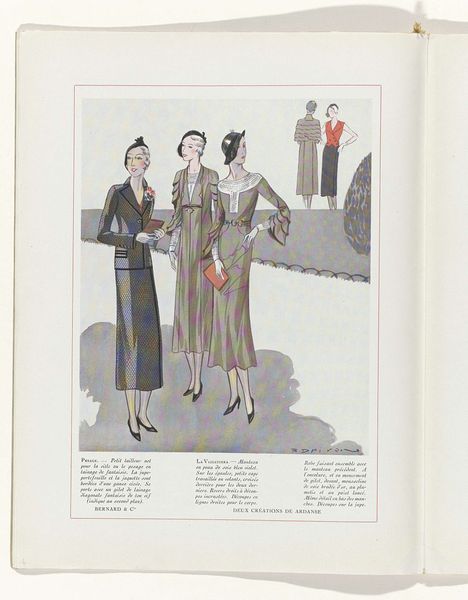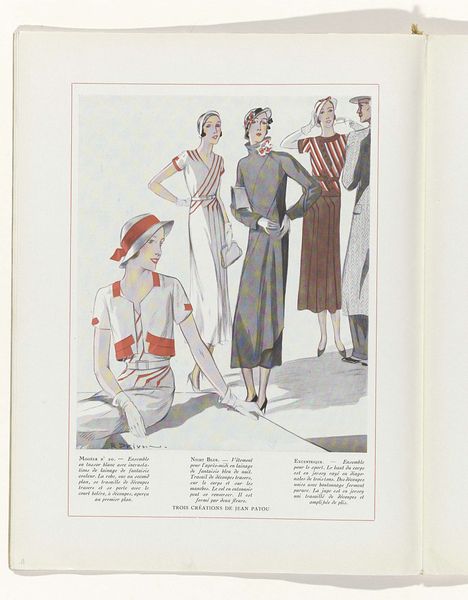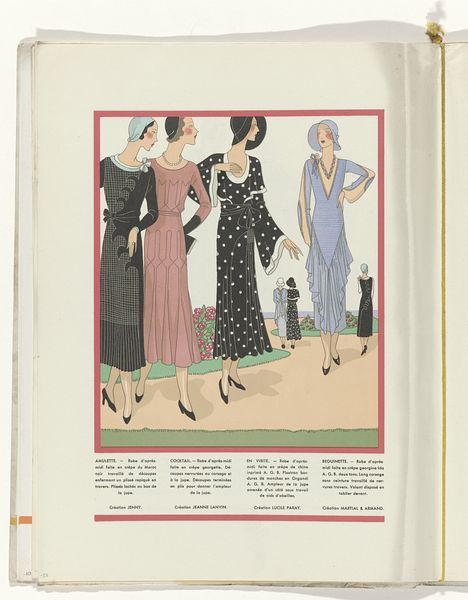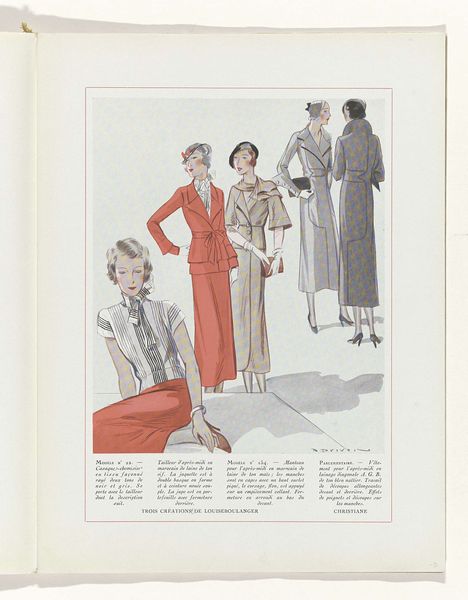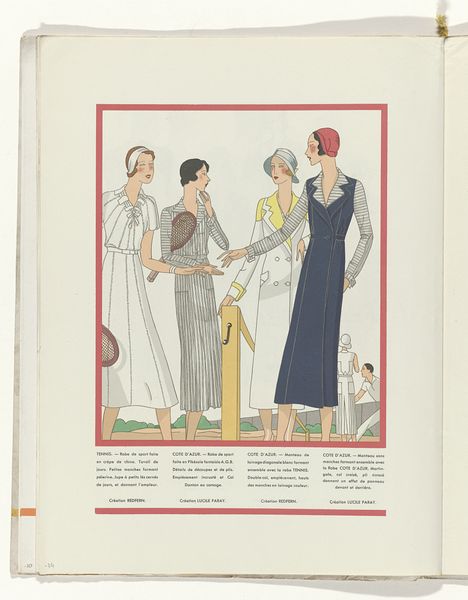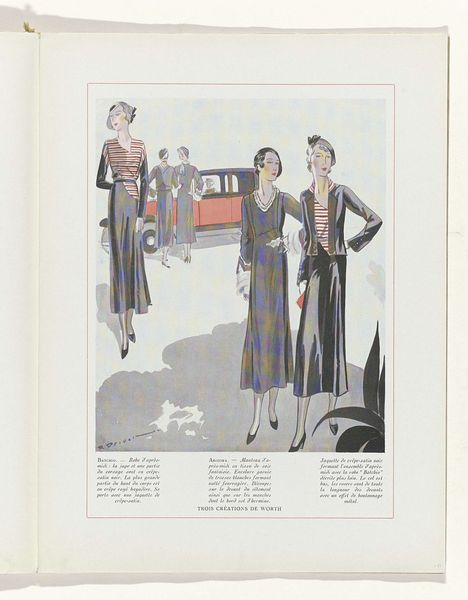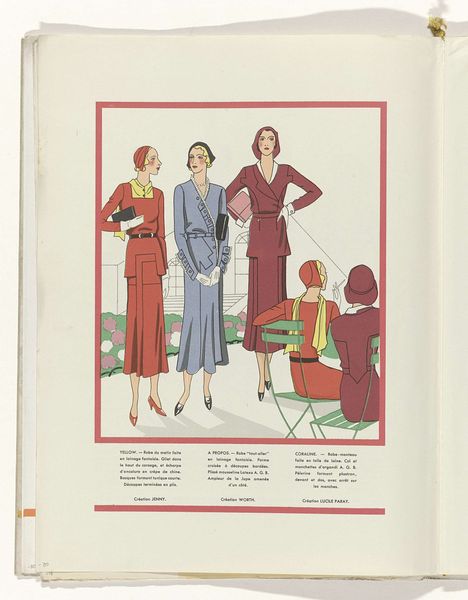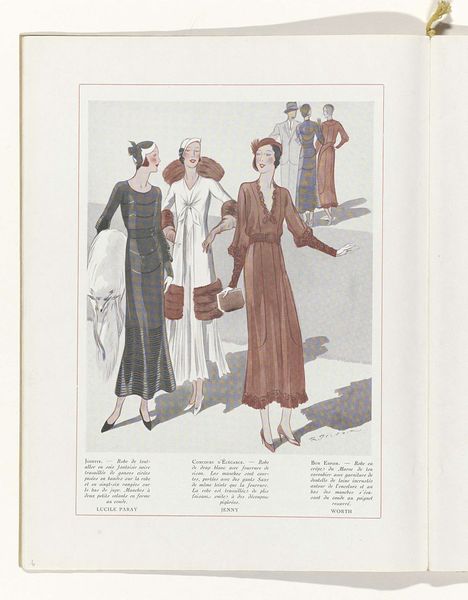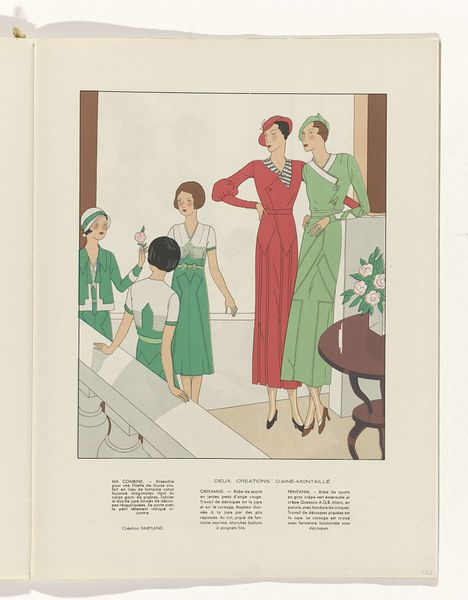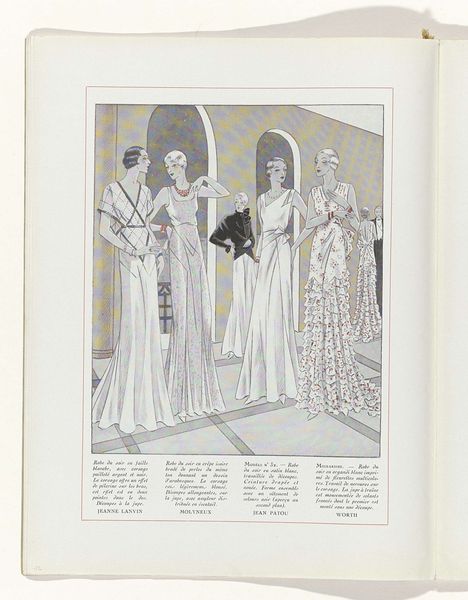
Art - Goût - Beauté, Feuillets de l' élégance féminine, Mars 1932, No. 139, 12e Année, p. 7 1932
0:00
0:00
drawing, graphic-art, print
#
portrait
#
art-deco
#
drawing
#
graphic-art
# print
#
figuration
Dimensions: height 315 mm, width 240 mm
Copyright: Rijks Museum: Open Domain
Curator: The print we’re viewing is titled "Art - Goût - Beauté, Feuillets de l'élégance féminine, Mars 1932". It's credited to R. Drivon and hails from 1932. It's an elegant rendering of fashion, typical of its era. Editor: It immediately strikes me as refined. There’s an almost dreamlike quality to the figures, elongated and gracefully posed against a muted background. It's very Art Deco, quite evocative. Curator: Yes, Art Deco aesthetics are key here. Look at the clean lines, the simplified forms, the print production itself as a conveyor of accessible style. These images played a vital role in disseminating Parisian fashion trends. Consider the labor involved in creating and distributing these prints. Editor: And note how each figure seems to project a certain aspirational lifestyle. The bold scarf of the central figure, the elegant hats and gloves. They signal not just fashion, but social aspirations and cultural values related to feminine elegance and beauty during the interwar period. Red scarves were also considered a very daring fashion statement in that era. Curator: The color palette also feels deliberately curated to invoke understated luxury, but one achievable via mass production. Note how these prints, mass produced for a discerning readership, influenced both high fashion and everyday styles. This blend of fine art techniques with mass production truly encapsulates the tensions within visual culture. Editor: There's something timeless in its composition. Beyond merely portraying dresses, these women embody certain archetypes – the confident sophisticate, the approachable friend. I find a strong sense of poised feminity conveyed through form and design. Curator: Precisely, a cultivated image disseminated widely thanks to advances in printing and distribution technologies of the time. Each stage of its production and distribution, from the artist’s hand to the reader, speaks volumes about access and aspirations during the interwar era. Editor: Looking at it with fresh eyes, it’s intriguing how a seemingly simple image holds within it such a wealth of cultural and artistic echoes. Thank you for pointing out all of that nuance in material production and historical context! Curator: Likewise, thank you for tracing its rich iconography and its subtle influences in today’s world.
Comments
No comments
Be the first to comment and join the conversation on the ultimate creative platform.
